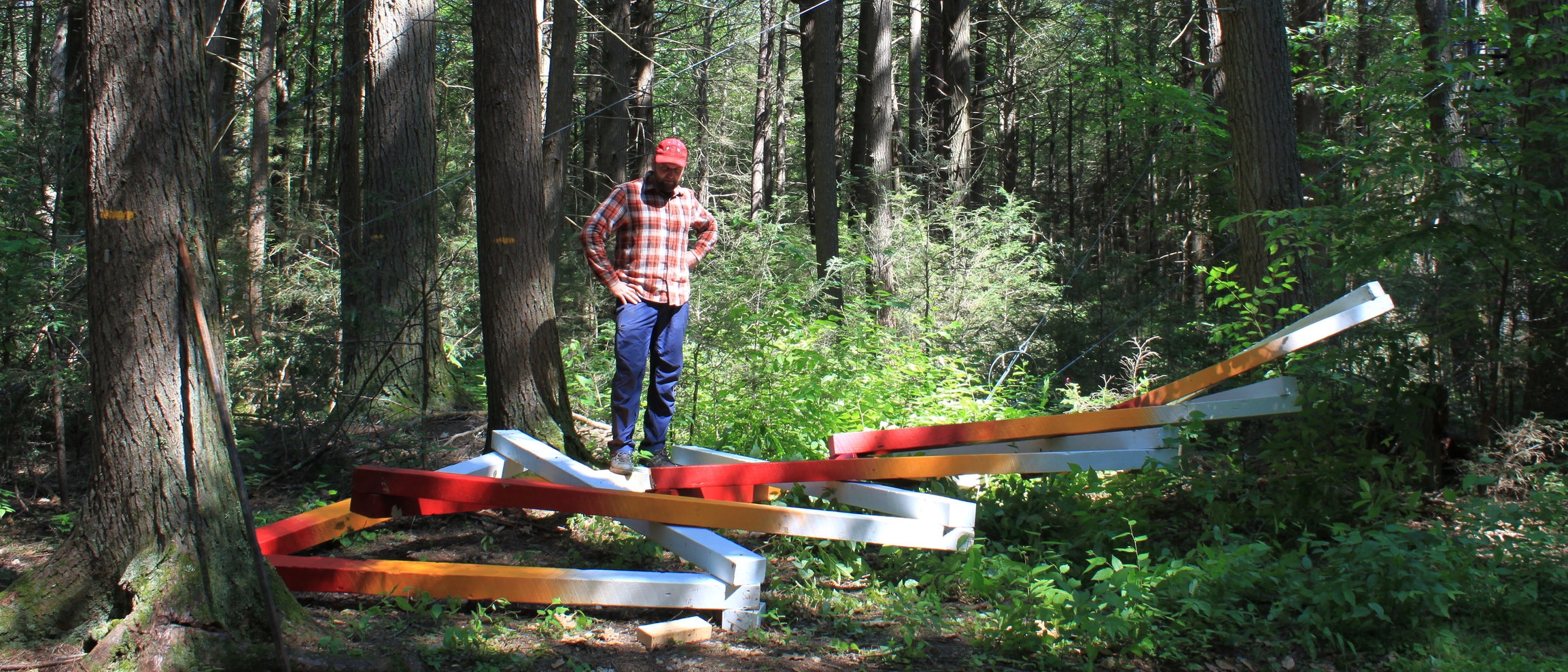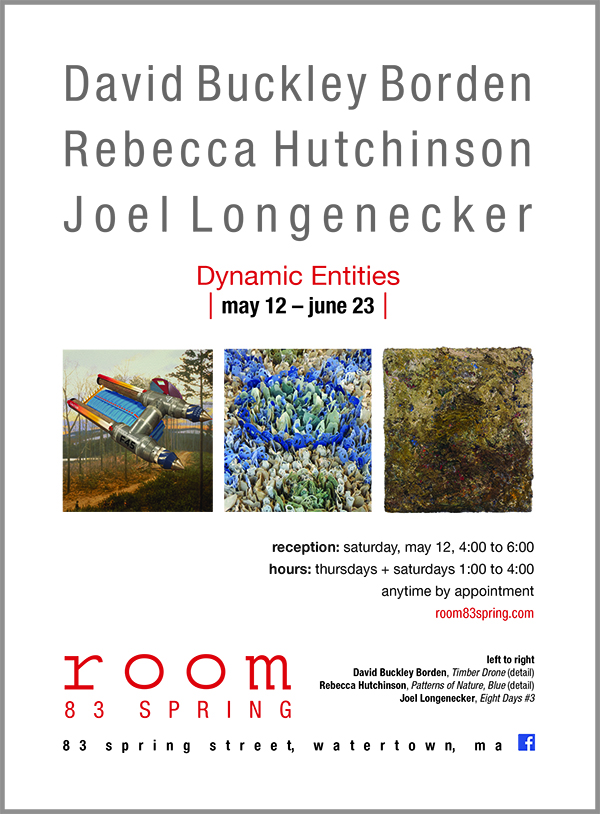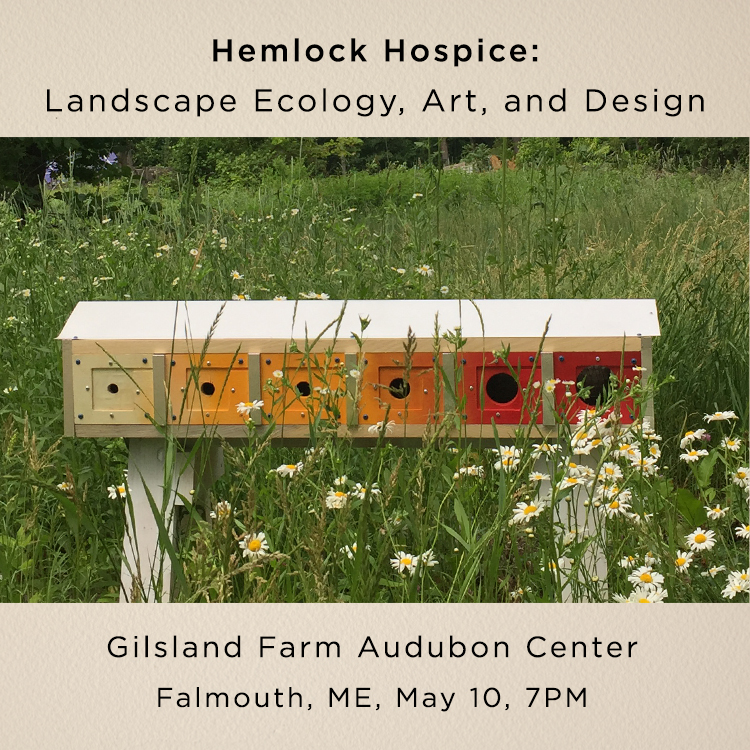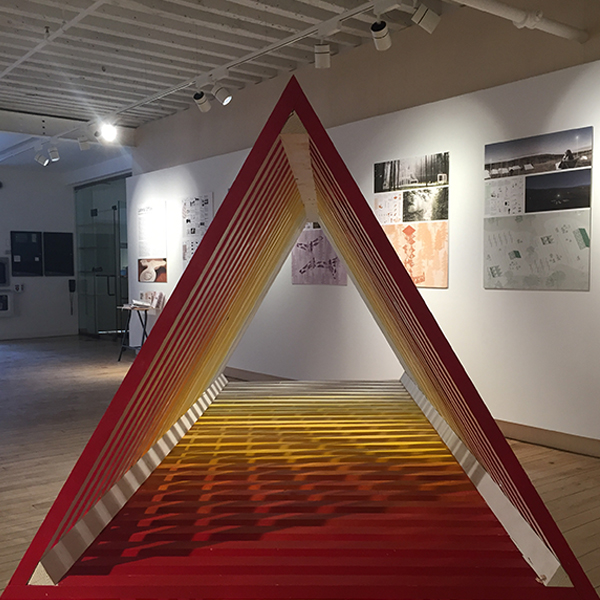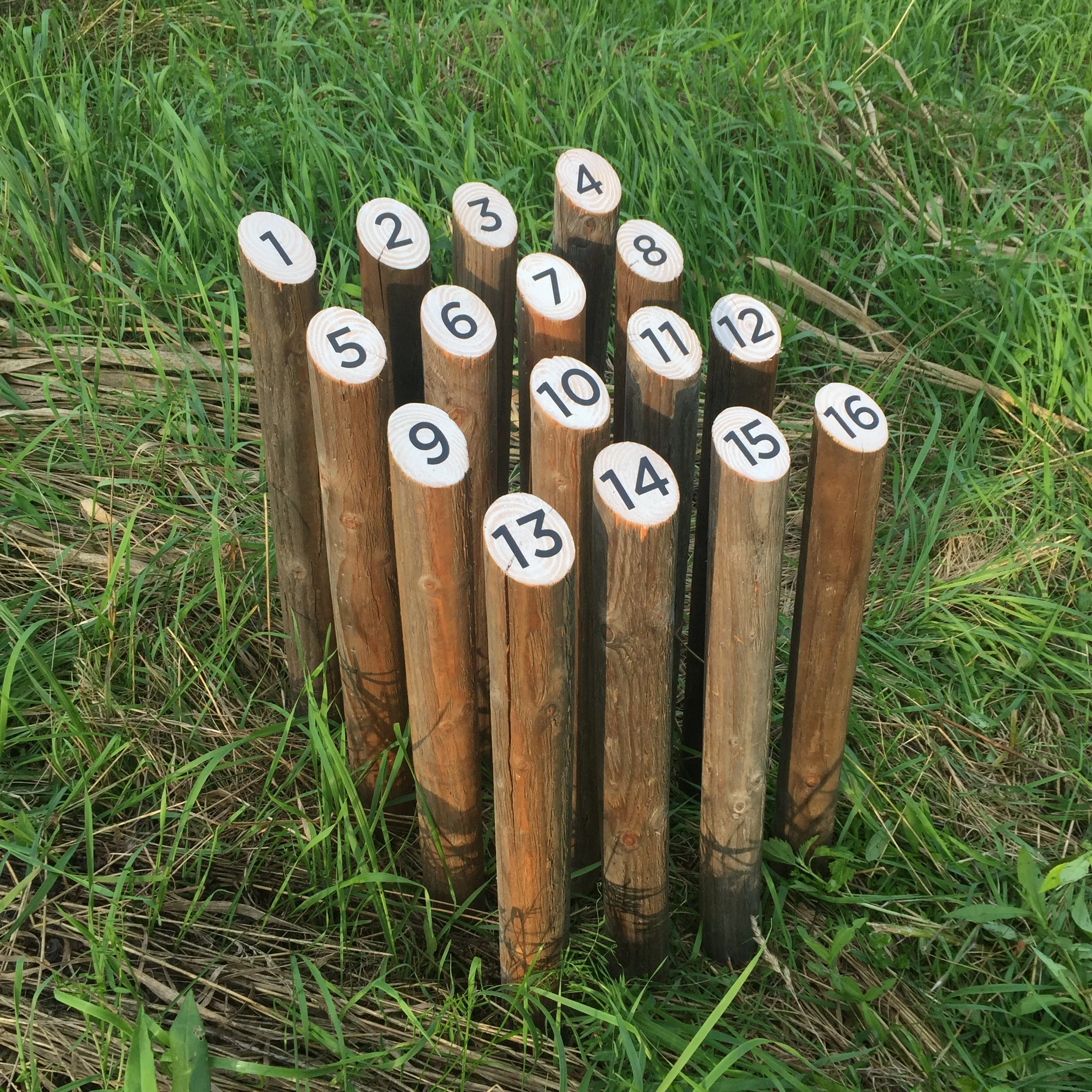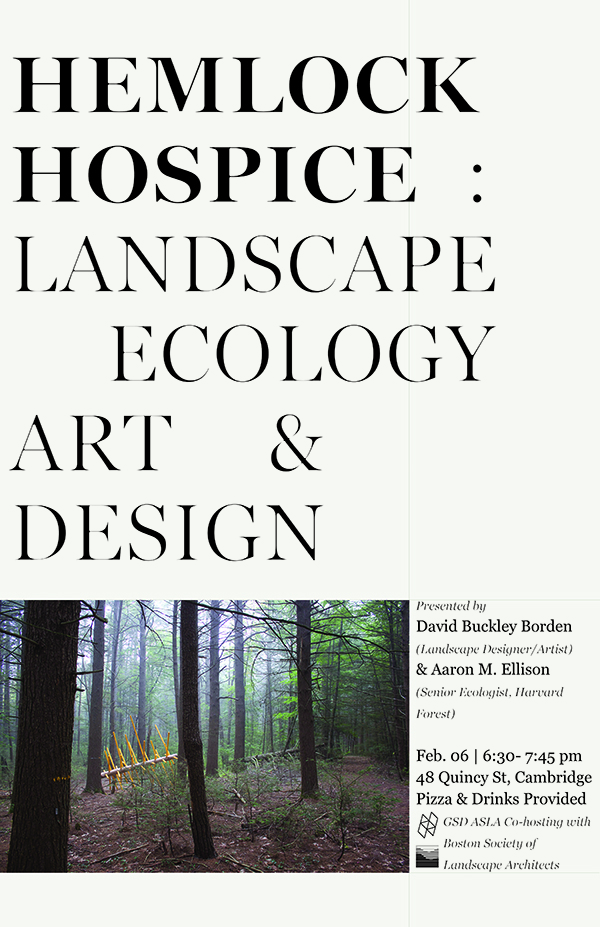Preprint on SocArXiv, "Hemlock Hospice: Landscape Ecology, Art, and Design as Science-Communication" coauthored by Dr. Aaron Ellison and I, is available online. Read it here.
Abstract: Interdisciplinary science-communication projects at the intersection of landscape ecology, art, and design are effectively realized through a democratic process involving co-equal collaborators. We illustrate this collaborative process through a case study of Hemlock Hospice, a 3000-meter-long art-based, site-specific interpretive trail at Harvard University’s Harvard Forest. At one level, Hemlock Hospice describes the ongoing demise of the eastern hemlock tree caused by a tiny aphid-like insect, the hemlock woolly adelgid. More broadly, Hemlock Hospice addresses issues of climate change, human impact, and the future of the world’s forests. This case study highlights gains realized from embedding artists and designers in an active scientific research site while specifically including scientists as full partners in designing and producing mission-driven educational artwork. It also illuminates challenges of democratizing art/science collaborations, including different modes of communication among participants; appropriate levels of financial support; different measures of scientific and artistic success; and creating opportunities for direct action.
